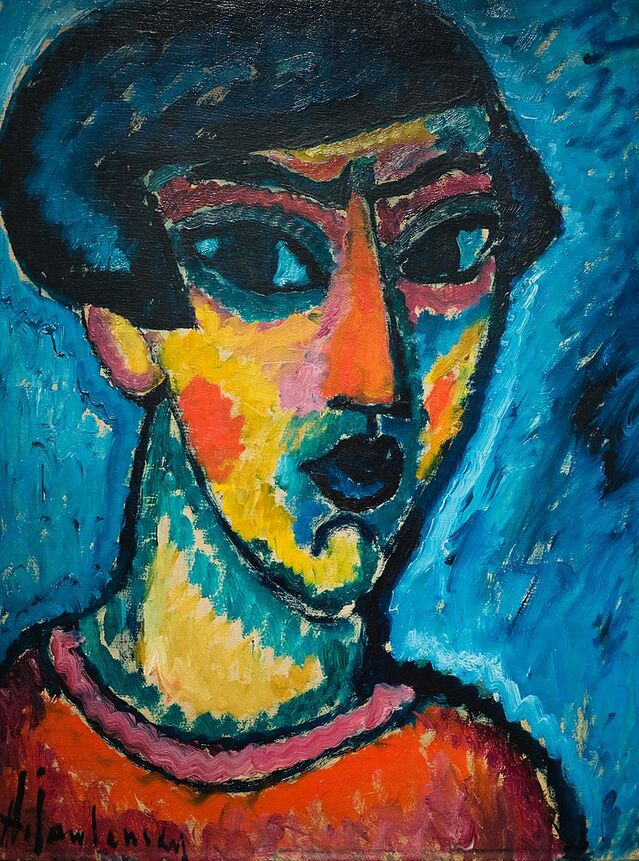Anxiety
Art: Anxiety, Anticipation, and Appreciation
Information itself, under conditions of uncertainty, is rewarding.
Posted May 18, 2020

Imagine a friend invites you to go to an Alexej von Jawlensky exhibit. You are anxious. You like art as much as the next person. For example, Hopper’s moody scenes engage you and Monet’s play of light captivates you. But you know nothing about Jawlensky. You want to like the exhibit because your friend is enthusiastic about it, but you have no idea if you will.
What do we know about what happens when we engage with art? In the framework we refer to as The Aesthetic Triad, aesthetic experiences are postulated to emerge out of interactions between three large scale neural systems that involve sensory-motor, reward-emotions, and meaning-semantics circuits (Chatterjee & Vartanian, 2016). Meaning modulates the relationship between sensations and our emotional response to those sensations.
The term “meaning” encompasses a lot. It includes our personal history, our education, and the cultural milieu in which we encounter art. It could be as simple as knowing the title of a work of art (Leder, Carbon, & Ripsas, 2006) or thinking that the art is hanging in a gallery rather than being generated by a computer (Kirk, Skov, Hulme, Christensen, & Zeki, 2009). In these cases, even though the exact same image is apprehended, the experience of the image is altered by knowledge.
Meaning can also be information that addresses uncertainty. An important idea developed over the last couple of decades in neuroscience is the role of prediction. We predict rewards that we might receive in the future. When the rewards we experience are greater than what we expect, a jolt of dopamine is released within our reward systems. When the reward is what we expect, the dopamine release remains at its basal rate. When the reward is less than what we expect, our disappointment is expressed in a dampening of dopamine release. The prediction error signal (more, same, or less dopamine release) help us learn, and if need be, reconfigure our expectations and modify models we have of the world (Hollerman & Schultz, 1998).
Imagine you are excited about a Hopper exhibit. You are sure that the paintings will be amazing and much richer than the pictures you have been looking at in art books and websites. If the exhibit meets your expectations, the dopamine release in your reward circuits remains the same. If the exhibit makes you realize that the reproductions you have been looking at are really quite good and the experience of the real thing is not much better, you might experience the drop in dopamine release. If the paintings are even more moving than you could have imagined, you receive an added dopamine boost. This boost might motivate future behavior. Maybe you will be more inclined to visit other exhibits of artists whose work you like because your updated prediction of exhibitions is that the real thing is amazing (even more than you thought previously) when compared to reproductions.
What about situations of uncertainty when you don’t have a prediction? You don’t know anything about Jawlensky. How can you make a prediction when you have no basis from which to predict the likelihood that you will enjoy the show? Recently, a tight circuit of neurons has been found in the monkey’s reward systems (i.e., anterior cingulate cortex, anterior pallidum, and dorsal striatum) that anticipates and responds to information about uncertainty (White et al., 2019). That is, even if the outcome is ultimately the same, such as a 50% chance of reward (water, in this case), neurons respond to cues that indicate that likelihood even though information does not change the chance of receiving the final reward. Furthermore, the monkey actively seeks out such informative cues as if the cue itself is rewarding.
Back to Alexej von Jawlensky. Maybe you find out information about him. He was a Russian expressionist, who was a member of the Der Blaue Reiter (The Blue Rider) group. This group included Wassily Kandinsky and Franz Marc. Later, after contact with Henri Matisse and Emile Nolde, Jawlensky created a series of portraits that used lush colors and simplified forms. Many of these portraits were visual references to the Russian Orthodox iconography.
None of this information tells you whether you will enjoy his paintings. But the information might shift the uncertainty into likelihood. You know that you like the work of Kandinsky and Marc. You generally like portraits that use color to express emotions. Medieval iconography intrigues you. So, chances are that you will like Jawlensky’s art. Neurons in your reward systems anticipate information that reduces uncertainty whether the reduction of uncertainty occurs because you did or did not receive the reward itself or because you received information that changes uncertainty to likelihood of receiving the reward.
We typically think of neural circuits for meaning and semantics as being distinct from those of rewards and emotion. These recent data about the neural underpinnings of information and its anticipation (White et al., 2019) demonstrate how this specific kind of meaning is fused with rewards at the level of individual neurons. Relevant information itself is a reward in the setting of uncertainty.
As a practical matter, the museum might do well to produce short videos or podcasts about Alexej von Jawlensky that a visitor can access before visiting the exhibit. People would feel rewarded by the museum whether or not they end up actually enjoying the paintings on display.
References




